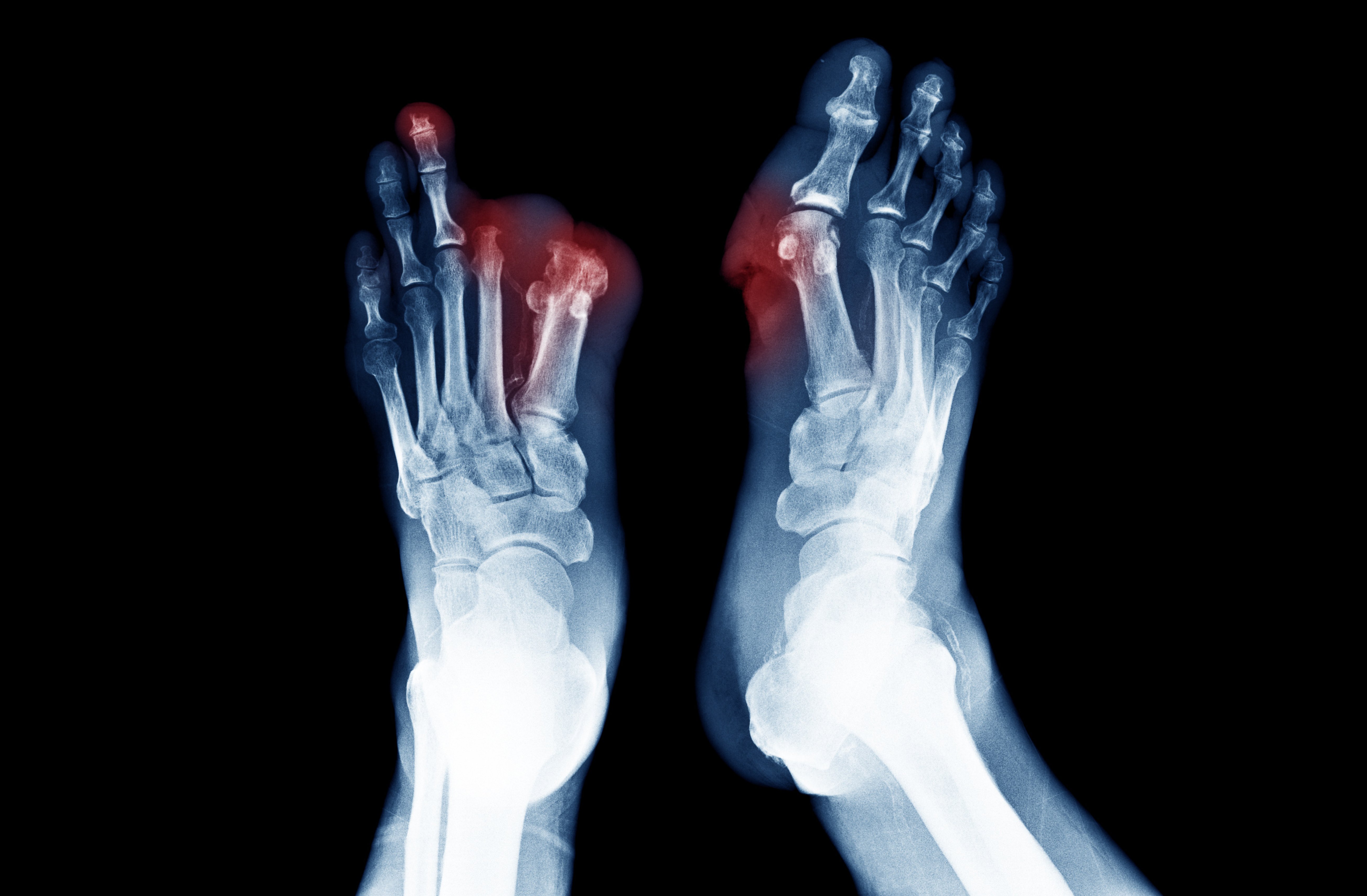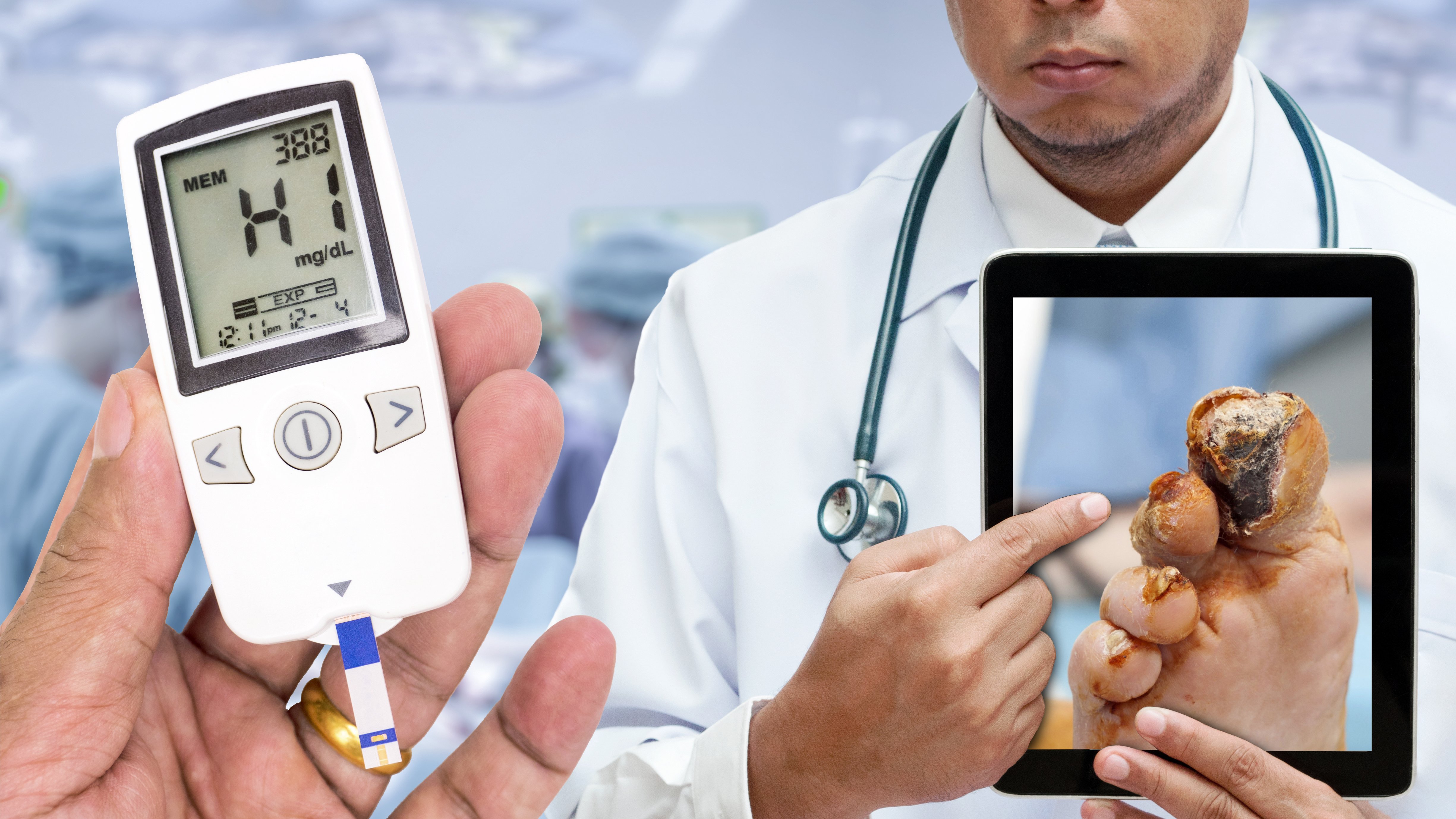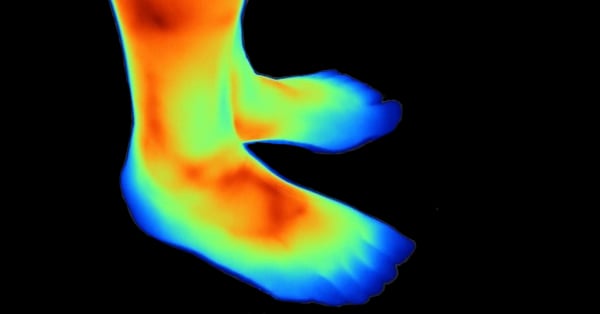Topics: Peripheral Artery Disease, diabetic foot ulcer, Gangrene, PAD Symptoms
For People with Peripheral Artery Disease, Why is it Common to Develop Gangrene on the Foot?
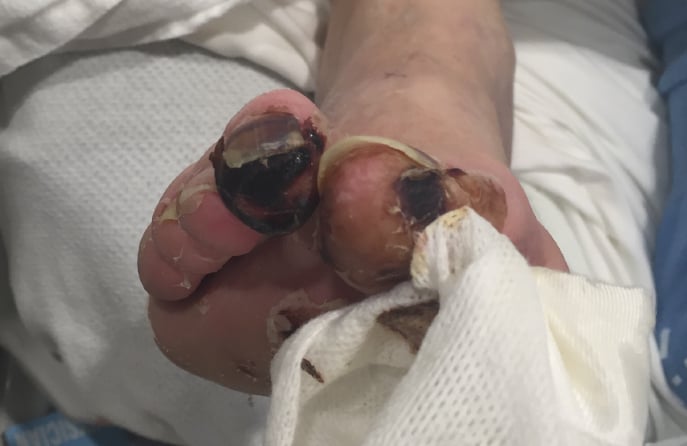 Gangrene can occur anywhere in the body where there is a lack in oxygen-rich blood that causes tissue to die. Gangrene commonly occurs in these places because sites on the body like the legs, feet and toes are the farthest away from the heart.
Gangrene can occur anywhere in the body where there is a lack in oxygen-rich blood that causes tissue to die. Gangrene commonly occurs in these places because sites on the body like the legs, feet and toes are the farthest away from the heart.
However, for patients with diseases like Peripheral Artery Disease (PAD), having gangrene on the feet is not uncommon if the disease is not diagnosed or not treated in time.
Which Patients Are Most Likely to Develop Gangrene on Their Foot?
While there are multiple types of gangrene, this article will be doing an in-depth discussion of dry gangrene. Dry gangrene is known to develop slowly and typically affects patients who have severe Peripheral Artery Disease (PAD) due to smoking and or diabetes. This is because both smokers and diabetics are significantly more likely to develop Peripheral Artery Disease.
PAD is a disease where the arteries become obstructed with plaque, leading to poor circulation, decreased healthy blood flow, and the potential for developing Critical Limb Ischemia, or late-stage PAD. Patients with PAD are more likely to have gangrene on their feet because the poor circulation leads to tissue death and gangrene.
Symptoms of Gangrene on the Foot
Some of the major symptoms of gangrene include, a discoloration in the foot or toes. The affected foot will typically look “decayed” and as it progresses the skin will begin to turn dark and dry out.
The Sign and Symptoms of Gangrene may include:
• Dry and shriveled skin
• Color changes – from blue to black
• Skin that feels cold and numb skin
• A clear line between the healthy and damaged skin
• A foul-smelling discharge from a leaking sore
The skin of the foot may also become much shinier in appearance before it starts shedding. This shedding will make a clear distinction on your foot between the healthy skin and the gangrene affected area.
The affected part of the skin could also feel cold to the touch, due to a lack of blood flow causing poor circulation. This restricted blood flow also translates to a complete or reduced loss of pulse in the arteries leading to your foot.
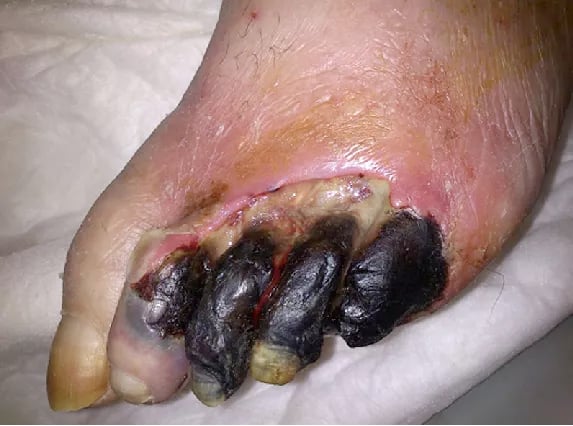
Additionally, you may notice that walking on or touching the gangrene affected area on your foot is very painful initially.
However, as gangrene develops you will notice a loss of sensation in your foot. When the gangrene becomes very severe you may have an inability to move your foot due to tissue death.
Risks of Gangrene Foot
Gangrene can become potentially fatal if not treated in time. Because gangrene can spread so quickly and cause tissue death, it is important that patients with PAD always seek medical attention when they first notice signs and symptoms of gangrene.
Another risk of gangrene is that amputation may be the only way to remove the dead tissue and prevent further spread. Amputation is a risk to a patient in and of itself. In fact, research has that diabetic patients with foot disease fear leg or foot amputation more than they fear death.
In addition, the rate of death after major amputation in the US is nearly 48% at 1 year and 71% at 3 years.1 This means that patients with gangrene are at a higher risk of amputation if they do not seek treatment immediately before amputation is their only available solution.
Watching for Warning Signs of Gangrene on the Foot
In order to prevent the risks such as gangrene rapidly spreading and amputation, patients who may develop gangrene need to be proactive in order to prevent it.
Patients with Peripheral Artery Disease due to smoking or diabetes are more susceptible to developing gangrene because their arteries may be blocked or obstructed.
These patients should examine their feet daily for warning signs of gangrene such as cuts, sores, swelling, redness, skin breaks or discharge. If you have risk factors for PAD, you should have a physician check your feet once a year.
Restoring Blood Flow to Treat Gangrene on the Foot
Gangrene is a severe form of poor circulation and restoring blood flood must be done immediately to saved toes or the foot from amputation.
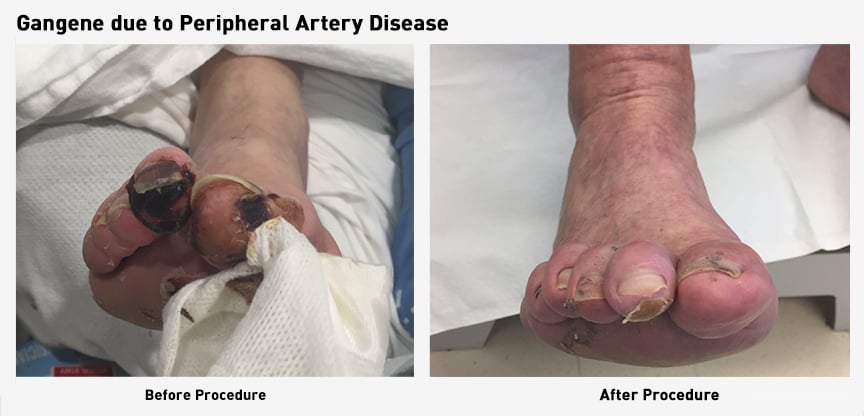
For patients with gangrene due to Peripheral Artery Disease, a minimally invasive procedure called Lumivascular Atherectomy is an option.
The Lumivascular procedure is one of the latest in technological advancements in the field of atherectomy therapy. The Lumivascular technology comes equipped with a camera-like imaging device on the end of the catheter that allows your doctor to see inside your artery.
This makes removing the plaque from the obstructed arteries safer so the doctor can return healthy blood flow to your lower limbs.
During the procedure, your doctor will be able to clearly see inside the obstructed artery and tell the difference between the healthy and diseased tissue.
The purpose of the Lumivascular atherectomy is to:
• Remove as much plaque as needed
• Restore healthy blood flow
• Improve the circulation to your feet
• Reverse gangrene and prevent an amputation
If you have gangrene and Peripheral Artery Disease (PAD), a Lumivascular atherectomy may be the best treatment option for you to reverse the symptoms.
If you are diagnosed with PAD and want to improve the blood flow to your arteries in your lower limbs, be sure to ask your doctor if a Lumivascular atherectomy is right for you.
Take Action:
- Patient Stories: Watch how PAD patients treated their symptoms
- Learn more about Lumivascular atherectomy
- Find a Lumivascular doctor in your area
If you have found this article helpful, please don’t forget to share!
Reference:
- Swaminathan, et al. Lower extremity amputation in peripheral artery disease: improving patient outcomes. Vasc Health Risk Manag.2014; 10: 417–424.



